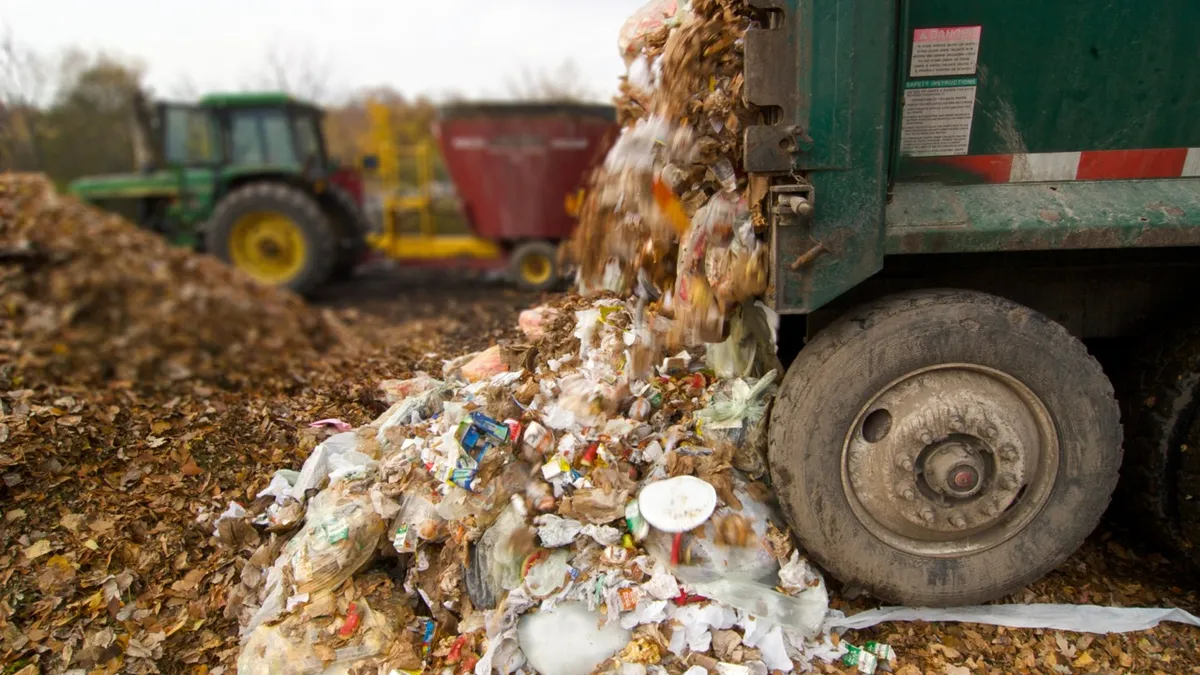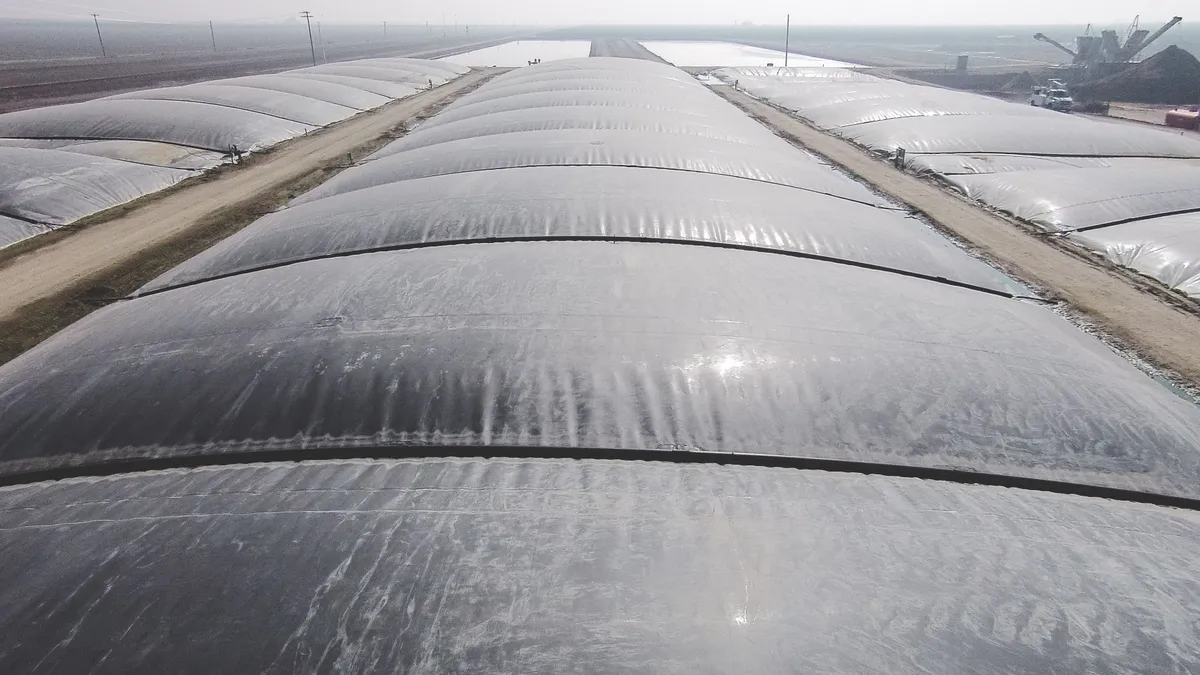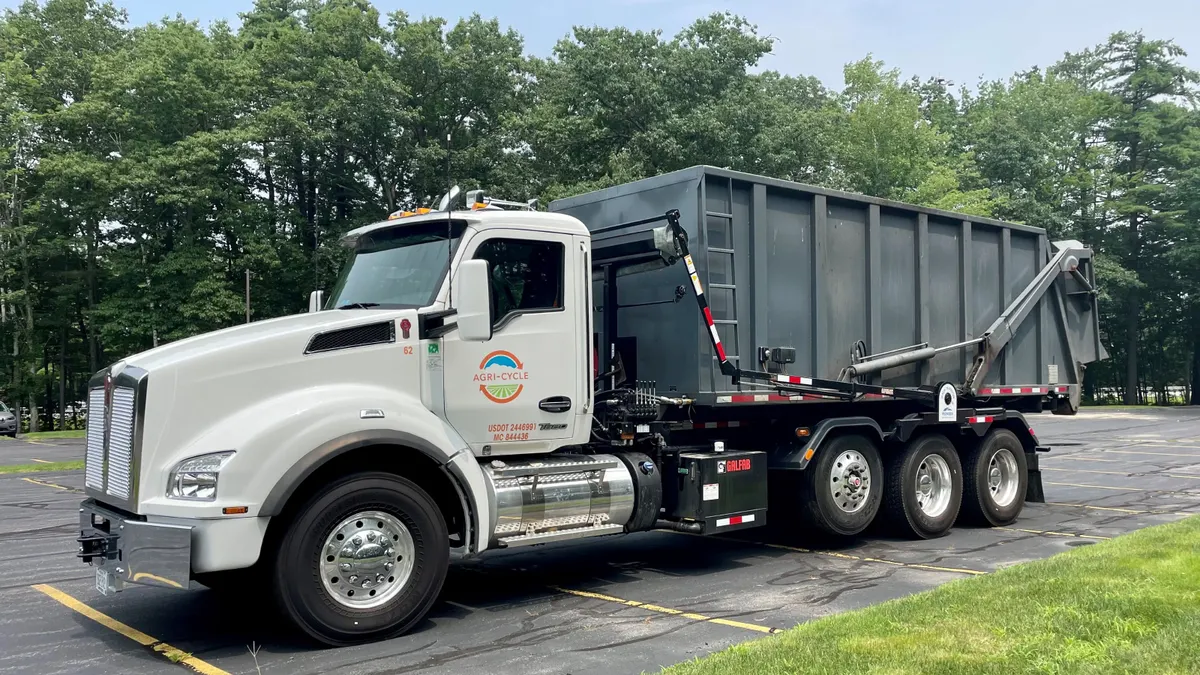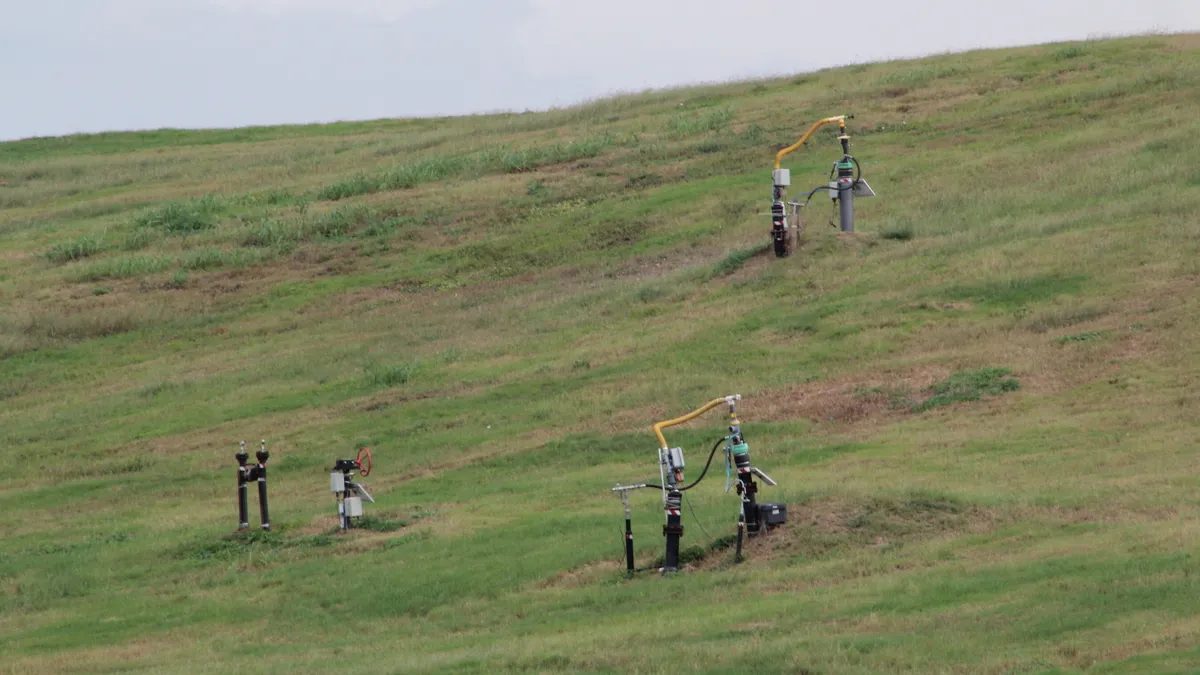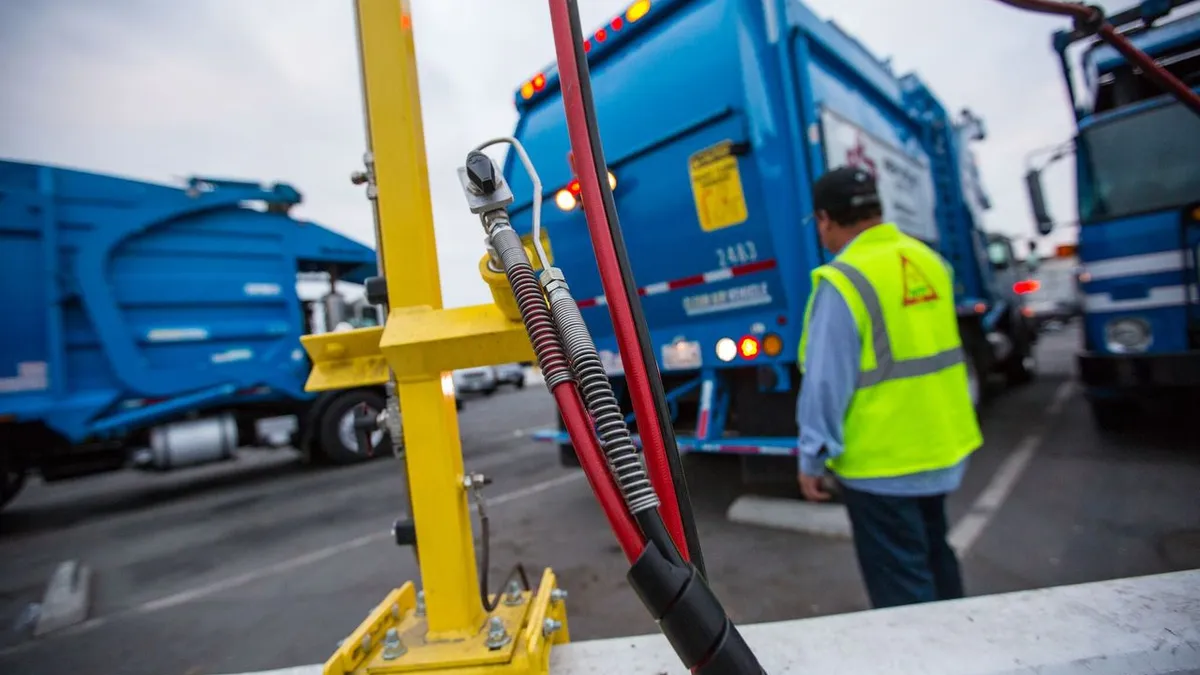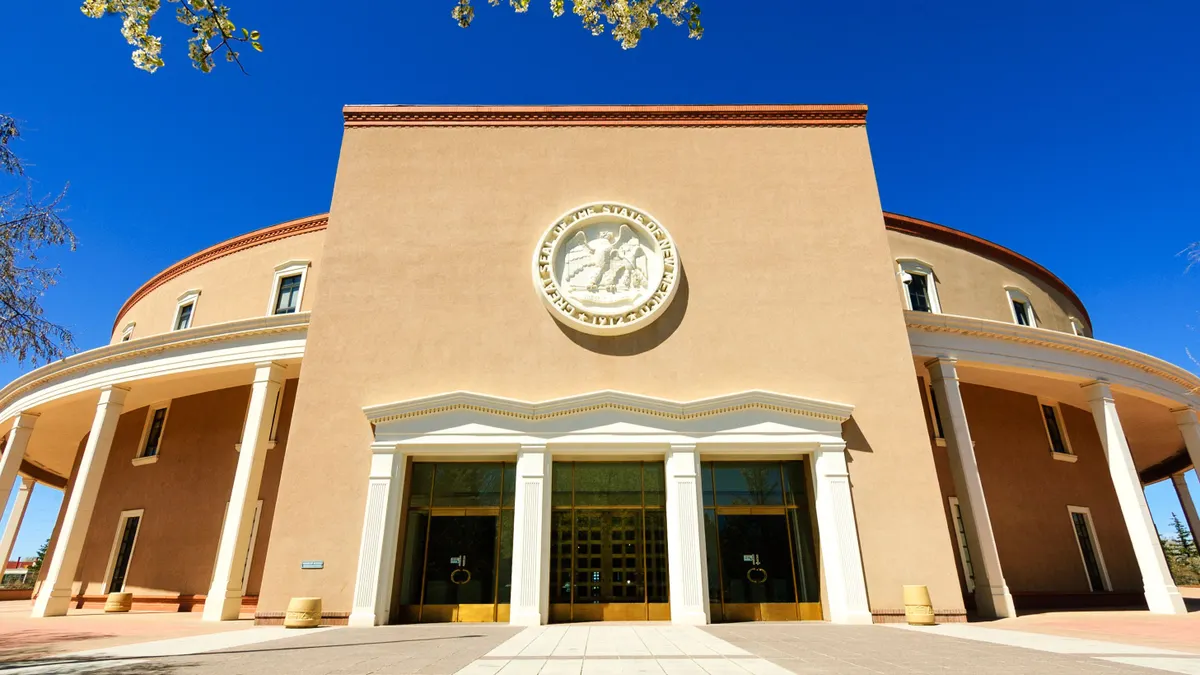The U.S. EPA is providing millions of dollars in funding to several waste and recycling initiatives around the country through its Climate Pollution Reduction Grants program. The funding comes from a $4.3 billion pot of money the agency is allocating, EPA announced July 22.
The funded will support a range of projects that include landfill emissions reduction, organics recycling, cleaner collection fleets and other key climate priorities.
Zero-waste advocates spent months urging applicants to get waste reduction initiatives into their priority climate action plans, which the EPA funded for agencies around the country in a previous phase of the CPRG program.
The list of awardees did include some unexpected twists. Namely, the three largest state agencies that submitted proposals — Texas, New York and California — did not receive funding.
Nevertheless, the EPA will fund 25 state and local governments and agencies that it expects will collectively reduce greenhouse gas pollution by 971 million metric tons of carbon dioxide equivalent by 2050.
Among those recipients are the state of Colorado, which is slated to receive $129 million toward its priority climate action plan. In its plan, the state placed a special focus on monitoring and capturing methane emissions, which put landfill gas in the crosshairs.
“I do think that is an area where there is a lot of possible low hanging fruit. That’s getting harder in some other sectors. But with landfills, oil and gas, natural methane sources, there’s still a lot that we can do," Dominique Gómez, deputy director of the Colorado Energy Office, said. "That’s why we’re excited to have this funding to build out our own planning on methane."
Colorado is also planning a fair amount of coordination with local governments to direct the new federal funding. Gómez said that could include developing model ordinances related to waste collection or supporting efforts to electrify collection fleets, as the Colorado town of Louisville recently partnered with Republic Services to do.
Other CPRG funding recipients are taking a similarly collaborative approach. The Minnesota Pollution Control Agency, which will administer nearly $200 million awarded to the state, is partnering with the Department of Natural Resources, Department of Agriculture and other state agencies for a plan centered around food systems.
Kate Knuth, climate director at the MPCA, said her agency will use some of the funding to support alternatives to landfilling and incineration, an ongoing topic of concern for the Twin Cities region.
"I think it’s really exciting that the federal government has made this investment," Knuth said. "We have the opportunity in Minnesota. We were asked to think big, and I think this proposal does."
In total, six plans were specifically called out by the EPA for their commitment to addressing waste and materials management decisions. Their priorities are below.
State of Colorado
Colorado will receive approximately $129 million in funding. Of that, it anticipates spending about $30 million toward its work on methane, which will expand existing monitoring programs that incorporate satellites, large and small planes, drones, ground vehicles, and continuous ground-based sensors, according to its plan. Colorado also plans to improve upon existing pilots that capture methane to generate electricity. Colorado currently has 59 active landfills that emit a combined 1.3 million metric tons of CO2e, according to its plan.
The plan also incorporates a measure that supports “adopting and implementing local policies to reduce waste, increase diversion rates, and reduce emissions associated with waste and waste hauling.” Suggested policies include new mandatory recycling or composting policies, pay-as-you-throw systems, adopting a single waste hauler policy or contract and others. Such efforts would be supported through a Local Climate Action Accelerator program run by the state.
Hudson Valley Regional Council (New York)
The Hudson Valley Regional Council, a group of 14 local jurisdictions, will receive approximately $3.1 million for a plan that specifically addresses landfills in the mid-Hudson Valley region. The group plans to oversee programs that will install “biofilters to reduce fugitive methane emissions from closed landfills,” according to the EPA’s announcement, as well as additional beneficial uses like solar arrays or pollinator gardens on those sites.
The EPA cites the state’s priority climate action plan when describing the measures this money would fund, though that plan does not make specific mention of closed landfills. The state has existing grant programs for municipal landfill closure projects and municipal landfill gas management projects.
King County (Washington)
King County will receive nearly $50 million for its plan focused on the life cycle of buildings. Of that funding, about $3.4 million will go toward a salvaged lumber program designed to reduce C&D waste, according to Terry Sullivan, climate and energy program manager for the county. The program would support deconstruction salvage processes while expanding distribution of the materials. King County also plans to increase the processing of salvaged lumber and use of salvaged lumber through grants.
State of Minnesota
Minnesota is slated to receive nearly $200 million from the EPA toward its priority climate action plan. Of that funding, about 17% is expected to go toward wasted food and organics management and 30% is geared toward industrial innovations in food and organics management space, according to Knuth.
While MPCA will be the lead implementing agency on the funding, it will distribute resources to a variety of new and existing programs, including the state’s wasted food and food rescue grants. Knuth said funding could also be made available to support new composting facilities in the state as it works to divert organics from disposal. MPCA will also set aside $15 million for tribes to use on their climate priorities.
State of Oregon
The Oregon Department of Environmental Quality will administer $197.2 million in CPRG funding awarded to the state. At a high level, the state plans to “invest in composting, food waste recovery infrastructure, and landfill methane controls at landfill sites,” as well as invest in zero-emission heavy-duty vehicle fleets and charging infrastructure. The state proposed investing about 15% of its funding in food waste infrastructure and 3% in landfill gas controls, according to its proposal submitted to EPA.
The plan estimates Oregon can “increase food waste processing capacity through 18-20 preprocessing or facility upgrade equipment purchases, establish 1-2 new processing facilities, and fund 3-4 new community composting programs” with the funding it will set aside for food waste infrastructure. It also expects three to six landfill gas projects will receive funding through the CPRG grant.
Commonwealth of Virginia
Virginia will receive nearly $100 million toward a plan coordinated by the state’s energy authority. Like other states, Virginia’s waste impact will come via a focus on methane and reducing wasted food. The Virginia Department of Environmental Quality will administer an $8.9 million program to support landfill gas collection systems at one to three landfills through a competitive bid process.
DEQ will also receive $8.9 million to invest in edible food recovery and composting programs. The agency plans to select 15 to 20 colleges, universities and local agencies to receive funding from that pot of money. It expects recipients to develop an edible food project and a food waste composting project within its grant request, according to Irina Calos, communications team lead for DEQ.



